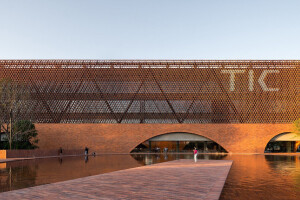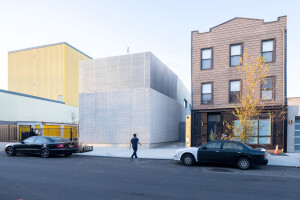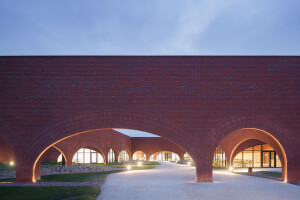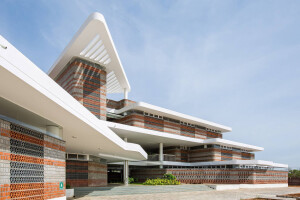The city of Copenhagen is currently celebrating its status as UNESCO’s World Capital of Architecture for 2023. The Danish capital also played host to the UIA World Congress of Architects 2023. As part of the event, a series of pavilions — experimental projects and explorative constructions — were erected to consider ideas around building for the future, in line with the UN’s 17 Sustainable Development Goals and the 2023 UIA congress theme: “Leave No One Behind”. One pavilion — “Bricks in Common” — considers this ancient building material’s part in creating a sustainable future for the construction industry.
In Denmark, and indeed across Northern Europe, brick is a traditional, commonplace building material. Nanna Flintholm, a Partner and Architect at Scandinavian architectural studio AART, one of the firms leading the “Bricks in Common” project, says: “Brick has played a central role in Danish social and welfare construction and is an important part of our architectural heritage.” However, brick presents something of a paradox. A material with many advantages, it is durable, resistant to bad weather, easily maintained, and can be reused or recycled. At the same time, Flintholm points out that brick “is very energy-intensive to produce,” adding that to bring brick into the future “will require innovation and new approaches to the material that take account of carbon emissions, resource consumption, and recycling.”
The “Bricks in Common” pavilion shows its appreciation of this much-loved building material, while questioning the relevance and place of brick in a sustainable future. The pavilion comprises three differently sized arches, each with approximately the same carbon footprint — around one tonne of CO2-eq.
The smallest arch is made from a solid and traditional energy-intensive brick. The medium arch “reflects the discourse around transition, using the latest and most climate-friendly machine-moulded brick on the market,” says AART. “This arch has 50 percent less carbon emissions compared with the smaller arch, thus demonstrating how it is in fact already possible to achieve reductions.” The pavilion’s largest arch represents an ambition to achieve a 75 percent reduction in CO2 compared with the smallest arch. This ambition relates to new housing construction in Denmark, with a goal to attain a 75 percent carbon footprint reduction by 2030.
Each of the three arches include a certain amount of recycled brick: 10 percent in the small arch, 30 percent in the medium arch, and 70 percent in the large arch. The small arch was built with a standard format brick based on natural gas. The medium and large arches use a standard format brick based on bio-natural gas.
Constructing the “Bricks in Common” pavilion:
Depending on the type of brick, there will be a range of different material qualities. Nanna Flintholm says that “brick is not just brick and when it comes to carbon emissions there is a huge difference between the many options on the market.” The architect adds: “In order to attain the necessary reductions from brick as a building material in the future, we need to go beyond setting carbon emission requirements for new builds and also establish requirements for how materials are handled and reused.”
"Bricks in Common” is a temporary pavilion. Its arches are stabilized using low-carbon concrete blocks. The remaining base is filled with sand and gravel, then paved in brick. The use of lime mortar ensures the bricks can be reused in the future.
AART led on the development of “Bricks in Common” with NOAA architects. The pavilion is at Copenhagen Harbour, in front of Havnegade 37, through October 2023.




































































